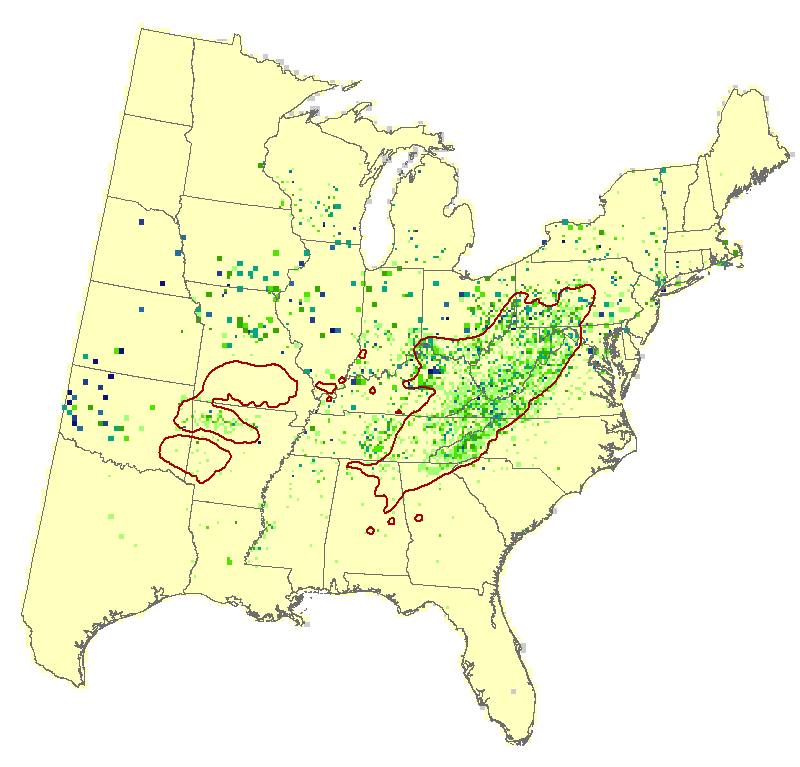black locust (Robinia pseudoacacia)
Model Reliability: Low
| GCM SCENARIO | % Area Occ | Ave IV | Sum IV | Future/Current IV |
|---|---|---|---|---|
| Actual | 9.1 | 6.9 | 18580 | N/A |
| RFimp | 12 | 3.6 | 12813 | 0.69 |
| CCSM45 | 22.8 | 2.7 | 18358 | 1.43 |
| CCSM85 | 34.4 | 2.9 | 29221 | 2.28 |
| GFDL45 | 36.3 | 2.8 | 30155 | 2.35 |
| GFDL85 | 46 | 3.3 | 44848 | 3.5 |
| HAD45 | 33.3 | 2.9 | 28091 | 2.19 |
| HAD85 | 43.6 | 3.6 | 45962 | 3.59 |
| GCM45 | 40.1 | 2.2 | 25547 | 1.99 |
| GCM85 | 49.4 | 2.8 | 40033 | 3.12 |
Regional Summary Tree Tables
Summaries for tree species are available for a variety of geographies, in both PDF and Excel format. These summaries are based on Version 4 of the Climate Change Tree Atlas
Interpretation Guide
Black locust is narrowly distributed (8.1% of area), but when present, is dense and high IV; it is fairly common in the central Appalachian region. Its low reliable model suggests an increase in habitat (though still classed as 'No change' because it has <10% area) to the north, especially in the RCP 8.5 scenario. However, the SHIFT model largely limits those new habitat locations from being naturally colonized within 100 years, though some expansion into this region has possibility. It is moderately adapted to climate change and has an overall capability rating of fair.
Family: Leguminosae
Guild: opportunistic, dispersal limited (sproutdependent)
Functional Lifeform: medium-sizeddeciduous tree
| 3.8 | 0.00 |
| -0.59 |  |
MODFACs
What traits will impact black locust's ability to adapt to climate change, and in what way?:
Primary Positive Traits
Primary Negative Traits
Shade tolerance Insect pests



